Heating without fuel: how to keep warm in winter without
One of the main trends of the modern world is that the price of traditional types of energy used for home heating is constantly rising. Therefore, an increasing number of people are thinking about the full or partial transfer of their homes to alternative types of heating that do not use fuel in the traditional sense of the word.
Special attention is paid to inexhaustible natural resources, which, for example, include sunlight.

Ways to get free heat energy
Strange as it may sound, there is not even one, but several different ways of heating your own house without using gas or solid fuel.
These include:
- Earth energy. The soil below the level of freezing even in winter has a constant temperature, using which you can properly heat the rooms of the house.
- Water energy. The principle of use is the same as that of the earth. If there is an open pond not far from the house that does not freeze to the bottom in winter, this energy can also be converted into heat for heating.
- Air energy. The air outside is a source of heat. Having cooled it with the help of special equipment, the received energy can be directed to increasing the temperature in the house.
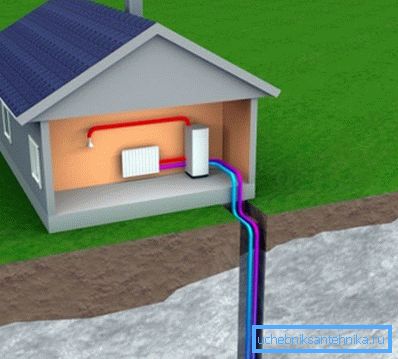
All the above technologies have been known to engineers for quite some time, but they have a significant drawback: special devices that run on electricity must be used to extract thermal energy. Therefore, to get completely free heat here will not work.
The only option is the sun. Although the equipment needed to transform solar energy into heat energy is quite expensive, its installation instructions are simple. You will be able to design heating collectors with your own hands, providing yourself with free heat in the future.
Note! Such an installation will work effectively only in the southern regions, where the sun heats the earth well. For the remaining regions of our country, it is advisable to use such a construction as an addition to traditional heating methods.
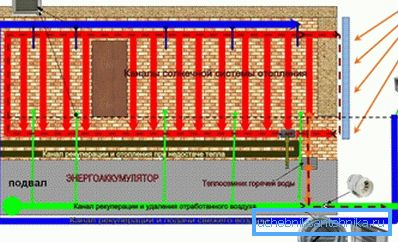
Use of heliosystem for heating
General requirements
Before deciding to install a solar heating system, consider the following circumstances:
- It is advisable to install a solar heating system only as part of the main one. On certain days and months, it increases the power of the traditional climate network, reducing the cost of fuel. Modern equipment still does not allow the use of solar collectors as the main source of heat.
- Solar heating system does not reduce the efficiency of the main heating system, as it functions separately.
- There is equipment that can accumulate solar energy, accumulating it in special devices. However, these technologies are under development and are not widely used. Therefore, the house should be equipped with a traditional boiler.
- In the summer, the heating system can be used as a source of domestic hot water. The heating circuit is turned off.
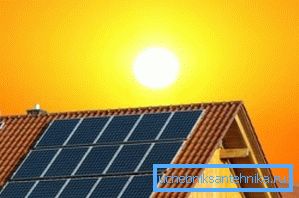
Area of solar collectors
To determine the area of fields that collect solar energy and convert it into heat, it is necessary to take as a basis the heat demand of all summer consumers.
These include:
- hot water supply system;
- system to prevent moisture condensation in the basement;
- other engineering networks not related to heating.
Then the obtained value must be increased by 2-2.5 times, thereby obtaining the desired power of the heliosystem. It is advisable to entrust accurate calculations to specialists, since many other factors affect this parameter.
Tip! For an approximate (very rough) determination of the area of solar collectors, we can take the following relationship: for heating 1 km. Of a house, it is necessary to have a Heliopolis ranging in size from 0.1 to 0.2 square meters. meter
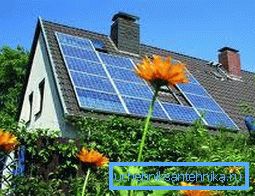
Tilt angle of solar panels
When installing a solar system, it is very important to observe the recommended angle of inclination of the collectors with respect to the horizon. If you have the opportunity to choose this value, which is not always the case, then solar panels should be placed at an angle of 60 degrees to the horizon, facing south.
Note! This parameter is slightly different from that used in hot water supply systems. Thus, greater efficiency of the panels in winter is achieved, and the excess heat energy generated in the summer is reduced.
In the case when panels that capture solar heat are supposed to be mounted on the roof, the angle of which does not exceed 30 degrees, it is advisable to give preference not to flat, but to tubular structures (with vacuum tubes). Their brackets provide for the possibility of individual orientation and changing the angle of inclination above the horizon, which significantly increases the efficiency.

Water storage capacity
To cover the need of the inhabitants of the house for hot water, it is necessary to include a storage tank in the solar climate system. It allows you to provide residents with water on cloudy days.
The tank capacity is calculated as follows:
- 50 liters per square meter of flat solar collectors;
- 90 liters per square meter of tubular accumulators.
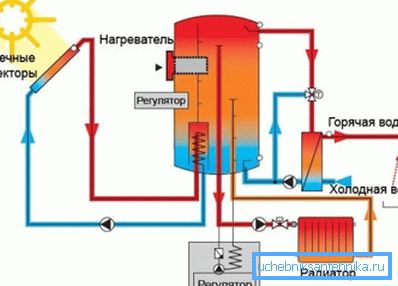
Varieties of solar heating systems
When designing a climate heliosystem, you can choose between two main options:
- Accumulate solar energy in special devices for later use. In this case, part of the system is a storage tank in which water is heated. To ensure system operation on cloudy days, an additional boiler is needed on traditional energy sources. It will heat the water in the tank with insufficiently effective operation of the solar climate system. The heated coolant enters the tank through pipelines to the heating radiators, which work in the same way as in the classical heating system.
- Directly use the resulting heat in the heating system at home. Here the sun heats the water coming from the batteries (return line). Thus, a heat carrier with a higher temperature enters the boiler, which significantly reduces heating costs - the heater will operate with a much smaller load.

Some features of operation
Note the most important points regarding the use of solar systems:
- it can cover no more than a third of the heating needs of the house;
- it is made part of a traditional system with a liquid coolant, where radiators are used as heating equipment;
- as the main source of energy, it is advisable to use a condensing gas boiler with the highest efficiency;
- the angle of the collectors must be equal to 60 degrees, otherwise the efficiency of the heliosystem significantly decreases in winter.
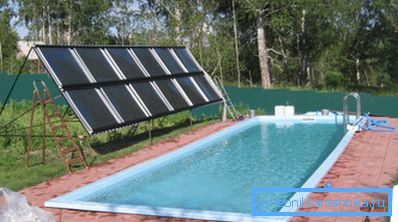
Conclusion
Although currently existing solar systems cannot replace traditional heating, they significantly reduce the load on the boiler, saving the fuel used. And the sun is not the only helper in this. In more detail about the combined schemes of heating you can learn from video in this material.